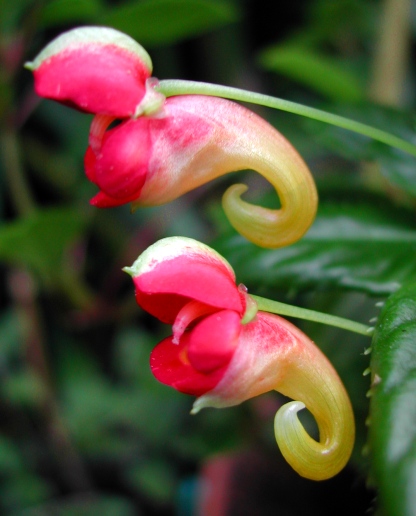Kilimanjaro Impatiens Impatiens kilimanjari
Please be careful removing your plant from its packaging. Soil -- Your Impatiens likes moist, well-draining soil that's high in organic matter. Most high-quality potting soils should work, although i recommend adding 1 part perlite for every 2 or 3 parts soil. Transplanting -- Transplant very gently to avoid damaging the roots. Plant it in a 1 gallon container (approximately). Avoid using a black pot, which can overheat the roots. If the plant should arrive a bit wilted, place a plastic bag over it for a few days while it perks up. Watering -- For the first month, ensure that the original soil ball remains moist all the times. You can use a moisture meter probe, which you buy get for about $4 at most garden and hardware stores. Climate -- The Kilimanjaro Impatiens prefers temperatures between about 50 and 75. It can tolerate dips into the 40s but should be protected from all frost. The plant has been known to lag in warmer weather. If you're in a warm area, you may wish to grow it indoors. It prefers some humidity - over 30-40% is recommended. Light -- This Impatiens normally grows on the jungle floor, where the sun is filtered through a lot of trees. It does best with tree-filtered sun or the equivalent. I've grown the plant 8" away from a fluorescent bulb, which gives you an idea of how much light it needs. Your Impatiens was grown in filtered light and will need to be acclimated to direct sun slowly. I recommend starting your plant with bright, indirect light for the first week, followed by a few hours of well-filtered sunlight, or morning sun. Keep in mind that this plant doesn't need a lot of direct sun. Filtered sun throughout the day works very well and prevents burning or overheating. Fertilizing -- Impatiens kilimanjari likes average amounts of fertilizer. Feed about every 3-4 weeks during periods of active growth using a complete fertilizer that has micronutrients Pests to watch for -- Scale (little brown disks on the stem - very hard to see!), aphids, spider mites (tiny "dots" under the leaves), mealybugs (white - easy to spot). Outdoors, snails/slugs. If you have any questions, feel free to email me. Enjoy your plant! Jeff Strange Wonderful Things
|
|||||||||


